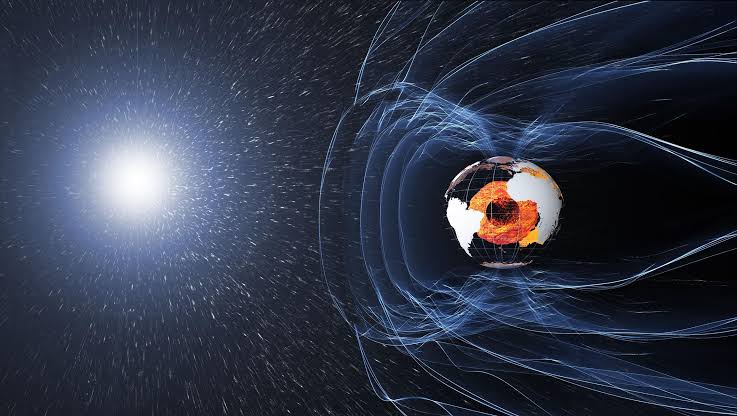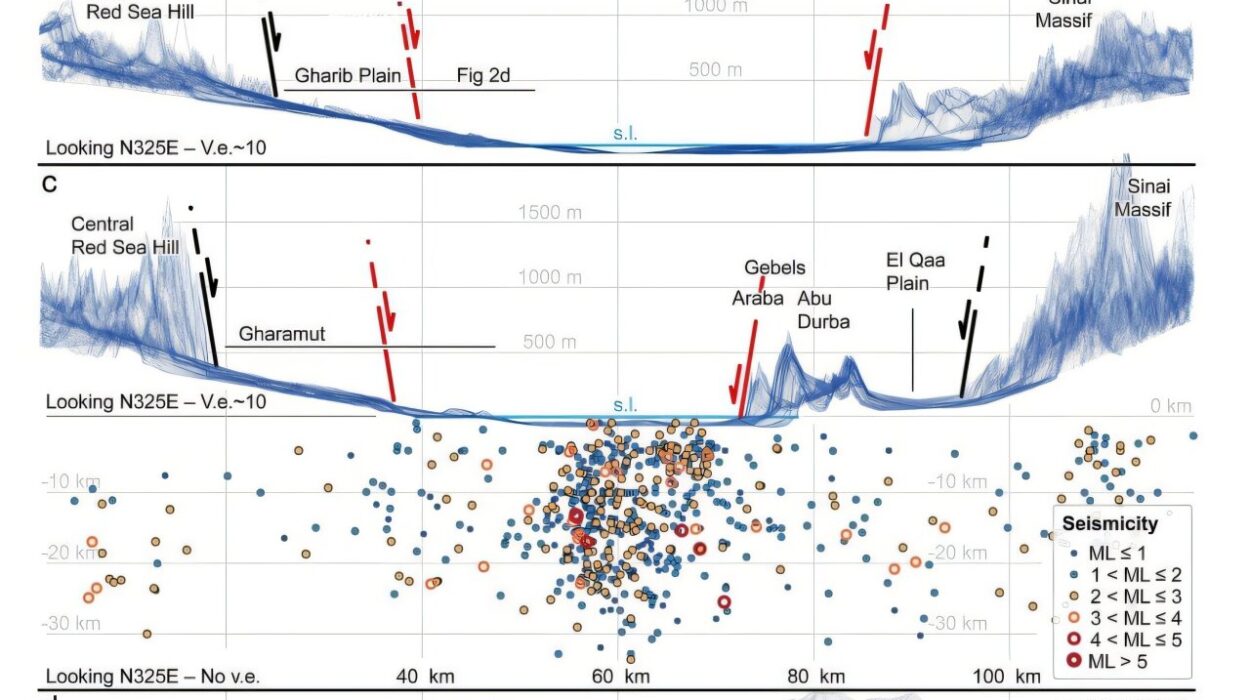Beneath your feet, hundreds of kilometers below the crust, a churning ocean of molten iron and nickel is quietly generating one of the most mysterious forces in nature: Earth’s magnetic field. You cannot see it, hear it, or touch it, but its presence is as vital as the air we breathe. It shields us from the Sun’s deadly radiation, helps migratory animals find their way, and makes compasses work anywhere on the planet. This magnetic field, however, is anything but static. It pulses, wanders, weakens—and occasionally, in a radical act of planetary inversion, it flips.
Yes, the North and South magnetic poles have reversed in Earth’s deep past. And they will do so again. The question is not if, but when. As scientists peer into Earth’s geological records and analyze the dance of the molten core, they are uncovering clues to one of the most fascinating and potentially disruptive natural events in planetary history. The flip of Earth’s magnetic poles is not just a scientific curiosity; it is a reminder of our planet’s deep dynamism and the fragility of our modern, electromagnetic world.
The Dynamo Within: How Earth’s Magnetic Field is Born
To understand magnetic pole reversals, we first need to grasp how Earth’s magnetic field is generated in the first place. The source lies deep within the Earth’s interior, in the outer core—a layer of molten metal roughly 2,200 kilometers thick that surrounds the solid inner core. This liquid iron alloy moves in turbulent, complex patterns as Earth rotates, and these movements create electric currents. Those electric currents, in turn, generate magnetic fields.
This process is called the geodynamo, and it operates much like a gigantic planetary generator. As heat from the inner core escapes and drives convection in the outer core, swirling currents of metal rise and fall, twist and spiral, creating magnetic loops that stretch around the globe. The result is a magnetic field that emerges near the geographic poles and extends far into space, forming a protective bubble known as the magnetosphere.
But this geodynamo is inherently chaotic. The fluid motions are not perfectly symmetrical or predictable. They vary in speed, direction, and temperature. Over long timescales, these instabilities can cause the magnetic field to shift, drift, and even completely reverse.
A History Etched in Stone: Traces of Ancient Reversals
If you want to find evidence of past magnetic pole reversals, look no further than solidified lava. When molten rock cools, iron-rich minerals within it align with the prevailing direction of the magnetic field—like tiny frozen compass needles. This magnetic orientation is preserved in the rock, recording the direction of the field at the moment of cooling. By studying volcanic rocks of different ages around the world, scientists have pieced together a magnetic timeline stretching back hundreds of millions of years.
This branch of science, known as paleomagnetism, has revealed a startling truth: Earth’s magnetic poles have reversed many times throughout history. More than 180 full reversals are known over the past 83 million years alone. The last major one, called the Brunhes-Matuyama reversal, occurred about 780,000 years ago.
Reversals are not predictable in timing or duration. Sometimes they happen every few hundred thousand years, sometimes millions of years pass with no reversal at all. The intervals between them vary wildly, and the process itself can unfold over several thousand years—or occur surprisingly quickly, within just a few centuries. They are chaotic, irregular, and deeply woven into Earth’s geological story.
A Field in Motion: Signs of Change in Modern Times
Though reversals take thousands of years to complete, Earth’s magnetic field is far from static even now. It is always shifting. The magnetic North Pole, for instance, is not fixed but migrates at an average rate of 10 to 40 kilometers per year. In recent decades, that movement has accelerated dramatically. From the Canadian Arctic, it is now racing toward Siberia at nearly 55 kilometers per year—so fast that magnetic maps used for navigation have had to be updated more frequently.
But even more alarming than pole migration is the steady weakening of the field itself. Over the past 160 years, the strength of Earth’s magnetic field has dropped by about 10 percent. Some satellite data suggest that parts of it, particularly over the South Atlantic Ocean, are thinning at an even faster rate. This anomaly, known as the South Atlantic Anomaly, stretches from South America to southwest Africa and represents a region where the field is unusually weak.
Some scientists believe that this weakening could be a sign that a pole reversal is on the horizon. Others caution that we are seeing natural fluctuations that occur even without full reversals. Still, the data is clear: the field is changing, and it’s changing in ways we do not fully understand.
Flipping the Planet: What a Magnetic Reversal Entails
If the magnetic field continues to weaken, could a full reversal happen in our lifetime? And what would it mean for Earth—and for us?
First, let’s clarify what a magnetic reversal is not. It is not a sudden flipping of the planet itself. The Earth does not rotate differently, and the continents do not shift. What reverses is the orientation of the magnetic field. Magnetic North becomes South, and vice versa. This process does not happen overnight. It typically unfolds over thousands of years, with the field becoming complex and fragmented during the transition.
Instead of one clear North and South magnetic pole, multiple north and south poles can appear all over the planet. Magnetic field lines twist and buckle. The overall strength of the field drops, sometimes to as little as 10% of its usual intensity. Eventually, a new stable configuration emerges, with the poles reversed.
It sounds like a cosmic reset, and in many ways, it is. But would such a flip be dangerous?
Life Under a Weakened Shield: Consequences of Reversal
One of the primary roles of Earth’s magnetic field is to shield the planet from cosmic radiation and solar wind. It deflects charged particles streaming from the Sun, preventing them from stripping away our atmosphere and bombarding life with harmful radiation.
During a reversal, as the field weakens, this protective shield becomes more porous. Some scientists worry that this could allow more high-energy particles to reach the surface, potentially increasing cancer rates, interfering with satellites, damaging electrical grids, and even affecting animal navigation systems.
Migratory animals—from birds and turtles to whales and salmon—rely on Earth’s magnetic field to orient themselves. Some use it like a map; others use it like a compass. Disruptions could confuse or disorient these species, possibly leading to population declines.
Yet Earth has seen hundreds of reversals, and life has endured. There’s no clear evidence that reversals caused mass extinctions. Creatures adapt, DNA repairs radiation damage, and the atmosphere itself provides a secondary layer of protection. While increased radiation might pose risks, it’s unlikely to be catastrophic.
What’s more vulnerable is our modern, technology-dependent society.
Satellites, Power Grids, and the Fragility of Civilization
Much of our technology relies on satellites, radio waves, GPS, and power infrastructure—all of which are sensitive to geomagnetic disturbances. When the magnetic field weakens, solar storms can more easily penetrate Earth’s defenses, creating geomagnetic storms. These storms can knock out satellites, interrupt communications, disable navigation systems, and even fry electrical transformers.
In March 1989, a geomagnetic storm triggered by a coronal mass ejection from the Sun knocked out power to millions in Quebec, Canada. That was under a relatively stable magnetic field. Imagine a future where the field is half as strong—or weaker. The potential for disruption is enormous.
The aviation industry, especially in polar routes, could be affected by increased radiation. Astronauts would face higher risks. Military and civilian navigation systems could become unreliable. Our digital society, built on electromagnetic infrastructure, might not fare as well as our hunter-gatherer ancestors did the last time the poles flipped.
Preparing for the Flip: Can We Predict It?
The short answer is: not yet. Magnetic reversals are not like clockwork. They don’t follow a predictable cycle. What scientists can do is monitor the signs—changes in field strength, pole movement, anomalies in the outer core—and build models that simulate the geodynamo.
Supercomputer simulations have shown how instabilities in the core might lead to reversals. They offer insights, but not precise predictions. The process is too complex, too chaotic, too dependent on variables we cannot yet observe directly.
If a reversal were beginning today, we might not recognize it until we were deep into it. It would start slowly, with the field weakening and becoming erratic. Over centuries, the poles would migrate, multiple poles might appear, and the field would eventually reorganize.
Rather than an apocalyptic event, it would be a slow-motion transformation—perhaps stressful, certainly disruptive, but survivable.
Earth’s Resilience and the Mystery That Remains
Despite all the advances in geophysics, there is still much we don’t understand about magnetic reversals. Why do they happen at all? Why are some intervals between reversals long and others short? Why have there been periods, like the Cretaceous Normal Superchron, where no reversal occurred for 40 million years?
The geodynamo is a complex, nonlinear system—prone to tipping points and feedback loops. Even the best models are just educated guesses.
And yet, that very uncertainty is part of the fascination. The possibility that the magnetic poles could flip—reminding us that our planet is not a fixed rock but a living, shifting, magnetic body—adds another layer to Earth’s endless complexity.
It’s humbling to know that deep beneath the surface, unseen forces are quietly preparing the stage for a transformation that may, one day, ripple through every compass, every bird’s flight, every satellite orbit, and every human life.
Conclusion: Living on a Magnetic Time Bomb?
We are not doomed. A magnetic reversal is not the end of the world. But it would challenge our assumptions, test our technologies, and remind us of our planet’s power to surprise us.
In the end, Earth’s history reveals not a single moment of catastrophe, but a pattern of resilience. Magnetic reversals have come and gone, leaving behind clues in lava flows and sediment layers. Life has persisted. Oceans have churned. Mountains have risen. Civilizations have flourished.
Still, the next flip—whenever it comes—won’t be just a curiosity for scientists. It will be a global event unfolding in the background of everyday life. And perhaps, in that slow shifting of the poles, we will be reminded that the invisible forces we take for granted are not so permanent after all.
The compass may spin, but life will go on.






